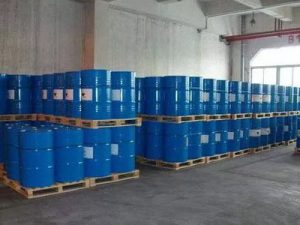Crabtree Directed Hydrogenation Catalysts
Directed Olefin Hydrogenation Catalyst – Iridium Catalyst: [Ir(cod)(PCy3)pyr]PF6 or Catalyst 3 pictured above {BArF=tetrakis[2,5-bis(trifluoromethoxy)phenyl]boron}. Common directing groups: OH, OMe, C55O, CO2Me, C(O)NR2 This catalyst was first discovered by Crabtree RH in 1979.

Roskamp-Feng reaction
In 1989, Roskamp was the first to report the preparation of β-keto esters using stannous chloride to catalyze the reaction of ethyl ethyl diazoacetate and aldehydes [J. Org. Chem., 1989, 54, 3258]. After more than two decades of development various Lewis acids (Sc(OTf)3, BF3, GeCl2) can be used for this reaction.In 2011, Prof. Xiaoming Feng from the School of Chemistry, Sichuan University, realized the first catalytic asymmetric Roskamp reaction with a chiral azoxy-Sc(OTf)3 complex catalyst.

Reformatsky reaction
Reaction of carbonyl compounds (aldehydes, ketones, and esters) to generate β-hydroxy esters by nucleophilic addition from α-halogenated esters and organozinc reagents obtained from zinc powder preparation.
The order of activity of different α-halogenated esters is: iodo acid ester > bromo acid ester > chloro acid ester > fluoro acid ester, because fluorine and chloro ester are not active, and iodo acid ester is more difficult to prepare, so bromo acid ester is commonly used. The reaction solvents are often used as absolute anhydrous organic solvents, the most commonly used are ether, benzene, toluene, xylene and so on.
α-Halogenated ester cannot react with magnesium to form Grignard reagent, but it is easy to form organic zinc compounds with zinc. This is an excellent way to prepare β-hydroxy esters. β-hydroxy esters can be used to prepare β-hydroxy acids and α,β-unsaturated esters.
Organozinc reagents are less active than Grignard reagents, so this reaction has a high functional group compatibility, but the reaction is slower. In recent years, similar reactions have also been found to occur with metals other than zinc, especially Sm(II), Cr(II), Ti(II), B(III), etc.
Luche zinc allylation reaction
Hill-Barrett calcium-catalyzed hydroamination reaction
Fujiwara lanthanide metal-catalyzed reactions
Reactions in which aromatic ketones or aromatic halogenated substances complex with lanthanide metals (e.g., ytterbium, Yb) undergo nucleophilic addition or nucleophilic substitution of ketones, nitriles, epoxides, and halogenated substances.
Metal-catalyzed stoichiometric nitration reactions
Grignard reaction (Grignard reaction)

Kabachnik-Fields reaction
In 1952, M. I. Kabachinik et al. reported a three-component synthesis of α-amino phosphonic acid. The acid-catalyzed three-component reaction of primary or secondary amines, aldehydes and ketones, and dialkyl phosphinidylidene esters gave α-amino phosphonic acids. In addition to the substrate dialkyl phosphite, phosphinic acid and phosphonic acid trialkyl esters are also capable of performing this reaction. Common catalysts include lanthanide metal salts (Sc, Yb, Sm, In) of trifluoromethanesulfonic acid or phthalocyanine complexes of Al, Co, Ni.
Ring-closing metathesis (RCM)
Ring-closing metathesis (RCM) is a metal-catalyzed reaction in which the carbon-carbon double bond is severed and recombined. It is a type of olefin decomposition reaction.
Olefin cross-composition reaction
Olefin cross-composition reaction is an olefin decomposition reaction in which two end-group olefins are catalyzed by Ru(II)-Carbine (Grubbs Catalyst) to release ethylene. Statistically, the reaction should produce three possible geometrical isomers, plus an E/Z configuration for each isomer, giving a total of six products.

